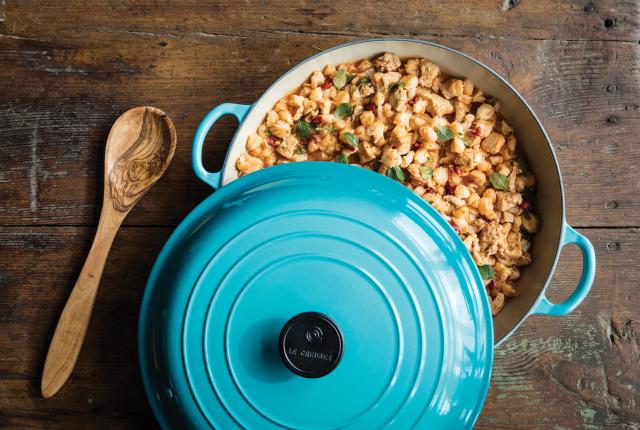From the Back to Basics article in the May 2017 issue.
Posole
Serves 8 or more
As one of the trinity of special summer crops, corn is occasionally eaten in New Mexico in ways familiar to other Americans, such as roasted or grilled on the cob, or made into a summer pudding, or simply cooked as a side dish of buttered kernels. The characteristically local ways of preparing corn, however, start with converting it to a preserved form. Turning it into posole is the most common method. The corn is nixtamalized (treated with slaked lime) to remove its outer skin, a technique developed by Native Americans centuries ago. The corn puffs up and becomes somewhat slicker in texture, with a distinctive bite when cooked. The technique also makes available the vitamins and an essential amino acid in the plant. A similar process produces hominy, but the lime compound is somewhat different and doesn’t result in the same earthiness found in posole.
- 6 dried New Mexican red chile pods, stemmed and seeded
- 1 to 1 1⁄2 pounds pork shoulder or loin, trimmed of surface fat and cut into bite-size cubes, or 1 or 2 pigs’ feet
- 2 pounds frozen posole or 1 pound dried posole
- 2 medium onions, chopped 6 to 10 garlic cloves, minced
- 1 tablespoon plus 1 teaspoon salt, or more to taste
- If you will be using frozen posole, first combine the chile pods with the pork in a Dutch oven or large pot and simmer in 4 quarts of water for about 30 minutes. Then add the frozen posole and cook about 30 minutes more. If your posole is dried, add it with the chile, pork, and 6 quarts of water and simmer for about 1 hour.
- Stir in the onions, garlic, and salt and continue to simmer over a low fire until the posole is soft. Expect the remaining cooking to take another 30 minutes for frozen posole and at least 1 hour if dried. Do not be surprised if it takes a bit longer.
- Serve hot in bowls with some of the liquid, or drain it with a slotted spoon and serve it on the side with other plated foods.


